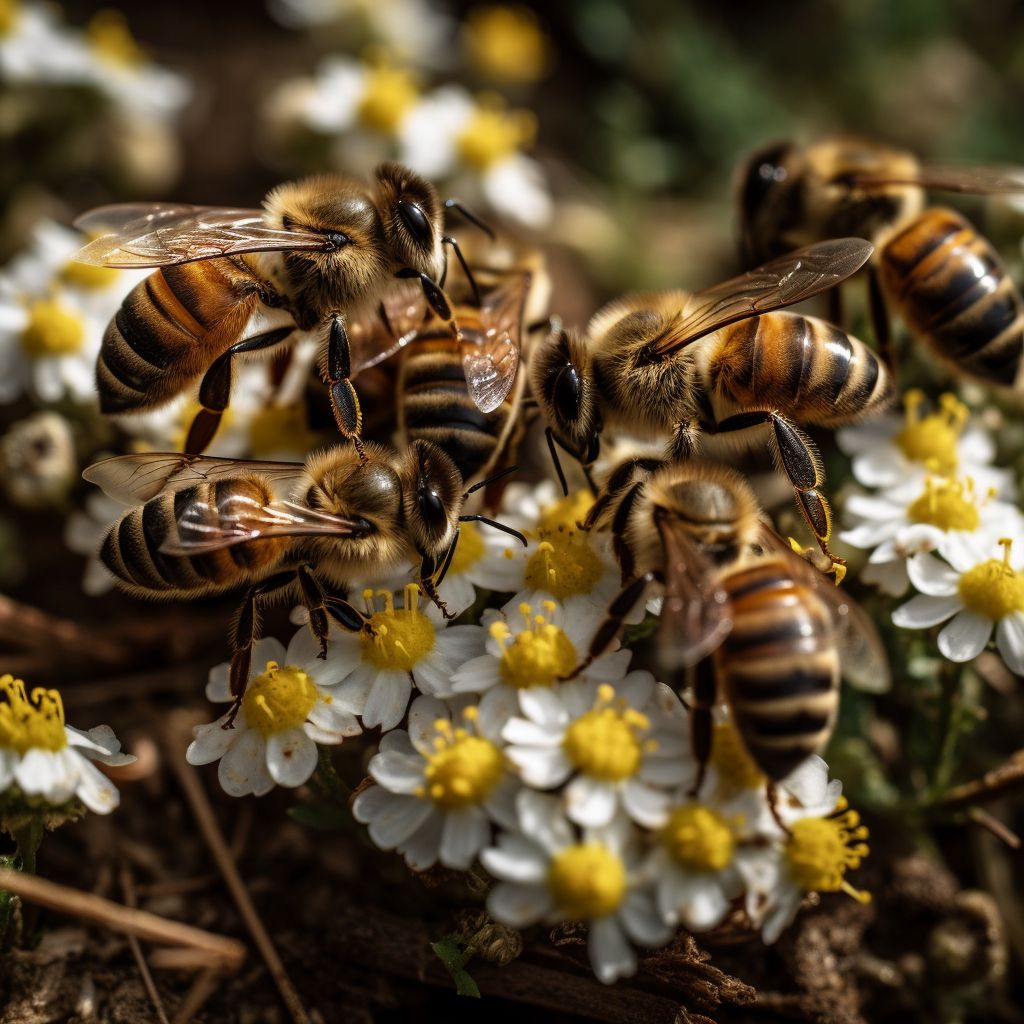Bee
Bees are flying insects closely related to wasps and ants, known for their essential role in pollination and the production of honey and beeswax. There are nearly 20,000 known species of bees, ranging in size, color, and behavior. Bees can be found on every continent except Antarctica, in every habitat that contains flowering plants pollinated by insects. This article will provide an in-depth overview of bees, their importance in ecosystems, and their role in Human society during the late 19th century.
Biology and Classification
Bees belong to the superfamily Apoidea within the order Hymenoptera. They are classified into various families, such as Apidae (honey bees, bumblebees, and stingless bees), Megachilidae (leafcutter and mason bees), and Halictidae (sweat bees), among others. Bees display a variety of body shapes, sizes, and colors, but they are generally characterized by their two pairs of membranous wings, branched or feathery body hairs, and elongated mouthparts adapted for feeding on nectar and pollen.
Social Behavior
Bees can be either solitary or social insects, depending on the species. Social bees, such as honey bees and bumblebees, live in colonies led by a single queen and consisting of workers (female bees) and drones (male bees). The workers are responsible for foraging, building and maintaining the hive, and caring for the queen and her offspring. The drones' sole purpose is to mate with a queen, after which they die. Solitary bees, such as mason and leafcutter bees, do not form colonies; each female bee builds her own nest and cares for her offspring independently.
Pollination and Ecological Importance
Bees play a crucial role in pollination, the process by which plants reproduce. As bees collect nectar and pollen from flowers to feed themselves and their larvae, they transfer pollen from the male parts of a flower to the female parts, fertilizing the plant and allowing it to produce seeds and fruits. Approximately one-third of the world's food crops depend on pollinators like bees, highlighting their immense importance in maintaining ecosystems and human agriculture.
Honey and Beeswax Production
Honey bees are well-known for their production of honey, a sweet, viscous substance made from the nectar of flowers. Bees transform the nectar into honey through a process of regurgitation and evaporation, storing it in honeycomb cells within their hives. Humans have been harvesting honey from bees for thousands of years, using it as a natural sweetener and a source of nutrition.
Beeswax is another valuable product derived from bees, secreted by worker bees to build the honeycomb structure within their hives. Beeswax has a variety of uses, including candle-making, cosmetics, and even as a medium for artistic sculptures. In the late 19th century, beeswax was highly prized for its versatility and was utilized in numerous industries.
Role in the Late 19th Century Society
In the late 19th century, bees played a significant role in both rural and urban environments. Beekeeping was a common practice, with many individuals maintaining hives to harvest honey and beeswax for personal use or sale. Honey was widely consumed as a sweetener, and beeswax was used in various applications, such as candle-making and cosmetics.
As concerns grew regarding the health of ecosystems and the importance of pollination for agriculture, interest in bees and their conservation also increased. Scientific research into bees expanded during this period, with naturalists studying their behavior, biology, and ecological roles.
Conclusion
Bees are fascinating and essential insects that have played a vital role in ecosystems and human societies throughout history. In the late 19th century, their significance in pollination, honey production, and beeswax manufacturing became increasingly apparent. As a result, the study and conservation of bees gained prominence in both scientific and public spheres.
The late 19th century saw a growing appreciation for the diverse array of bee species, their differing behaviors, and their contributions to the natural world. As urbanization and industrialization continued to expand, the importance of preserving habitats and promoting practices that supported bee populations became more widely recognized.
Bees in the late 19th century were crucial not only for their direct contributions to human agriculture and industry but also for their broader role in maintaining the health and stability of ecosystems. As our understanding of these remarkable insects grew, so too did our appreciation for their essential place in the natural world and our responsibility to protect them for future generations.

